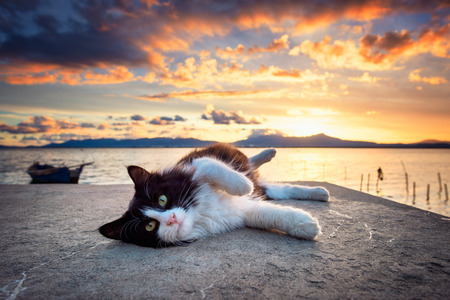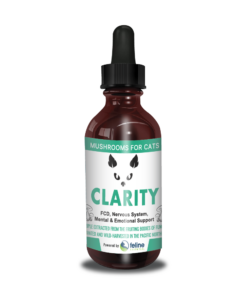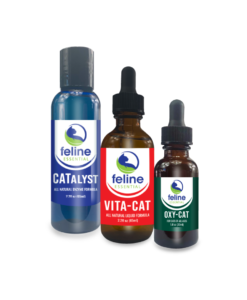Feline Hepatic Lipidosis – Why Cats Must Eat Daily
Feline Hepatic Lipidosis is the most common liver disease in cats. It’s is also known as fatty liver syndrome. This disease is most commonly seen in fat cats that lose weight too quickly, but all cats are susceptible to Hepatic Lipidosis.
Hepatic Lipidosis begins when your cat’s body is starved of calories. In need of energy, the body starts sending fat cells to the liver – but the liver of a feline isn’t designed to metabolize fat in this way. Because of this, the fat cells begin building up around the liver, which can cause liver failure if left untreated.
Causes of Feline Hepatic Lipidosis
Even though it’s considered an idiopathic syndrome (unknown cause), we know some clear triggers of hepatic lipidosis. The most common trigger is when cats “starve themselves”.
Cats are not like dogs. They cannot “fast” for a day or more like dogs can. Hepatic lipidosis is common when cat parents try changing their kitty’s diet and the cat refuses to eat it. Another reason cats develop fatty liver syndrome is when they are battling infection and lose their appetite. Cats are stoic beings and do not often let us know when they are sick. This is why it’s very important to pay attention to the eating habits of your cat. Paying attention can help you catch this problem before it becomes deadly.

Prevention & Treatment of Hepatic Lipidosis
Pay attention. Cats were not made to “graze” like cows, so free feeding isn’t an ideal way to feed our kitties. Scheduling routine feedings for your cat each day will make it easier to gauge the amount of daily calories they are getting.
If you see symptoms like anorexia (cat refusing food), dehydration, excessive drooling or sudden weight loss in your cat, take her to a veterinarian immediately. If caught early enough, hepatic lipidosis can be easily treated through nutritional support and force feeding. Treatment can take anywhere from 4-12 weeks, on average. The goal is to get your kitty eating on her own again, so be sure to offer her food during treatment.
Never assume that your cat will eat when they get hungry enough. This is not so for cats. Be proactive and make sure your cat gets adequate calorie intake by monitoring their meals.




Recent Comments